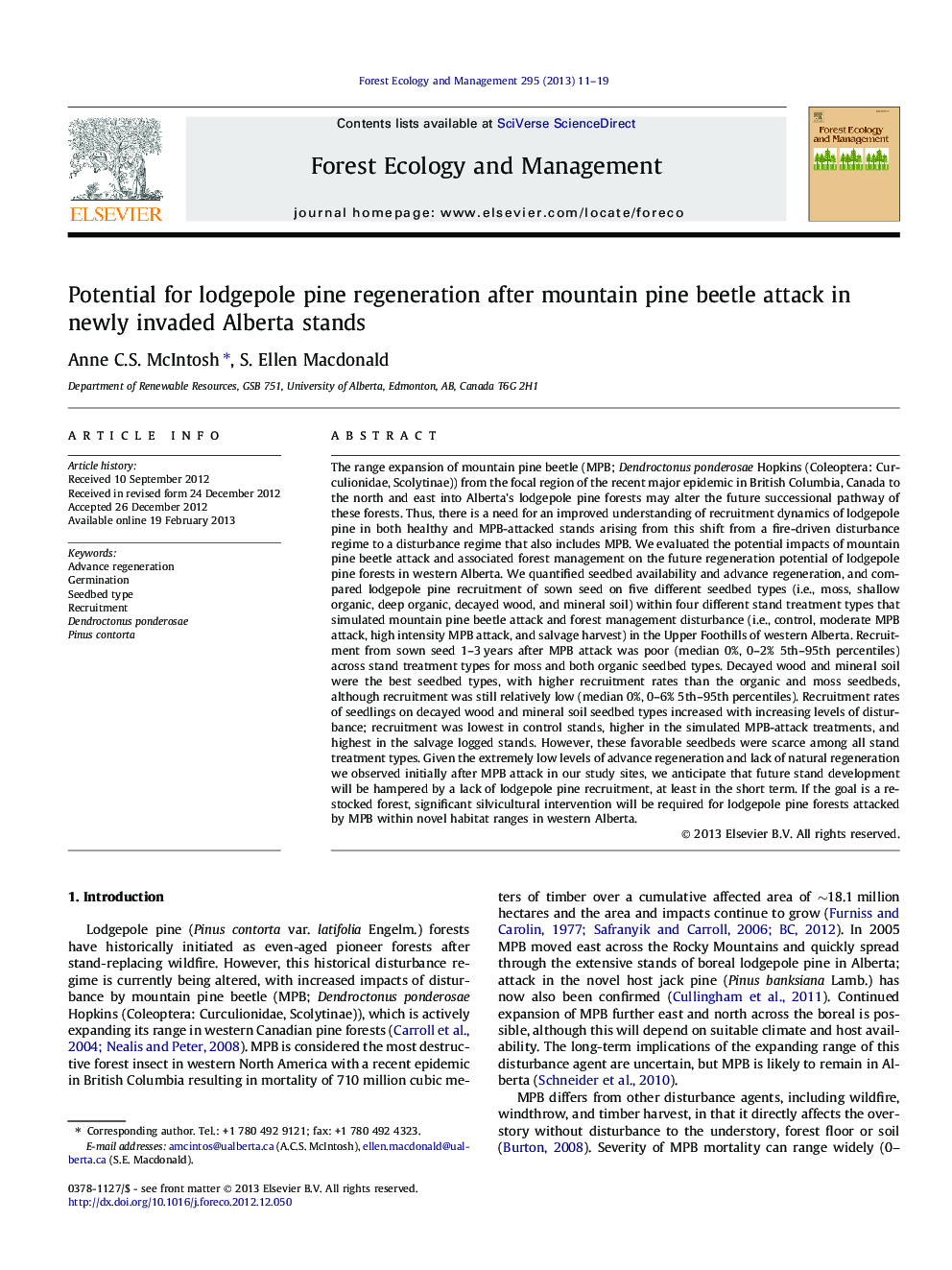| کد مقاله | کد نشریه | سال انتشار | مقاله انگلیسی | نسخه تمام متن |
|---|---|---|---|---|
| 86846 | 159217 | 2013 | 9 صفحه PDF | دانلود رایگان |

The range expansion of mountain pine beetle (MPB; Dendroctonus ponderosae Hopkins (Coleoptera: Curculionidae, Scolytinae)) from the focal region of the recent major epidemic in British Columbia, Canada to the north and east into Alberta’s lodgepole pine forests may alter the future successional pathway of these forests. Thus, there is a need for an improved understanding of recruitment dynamics of lodgepole pine in both healthy and MPB-attacked stands arising from this shift from a fire-driven disturbance regime to a disturbance regime that also includes MPB. We evaluated the potential impacts of mountain pine beetle attack and associated forest management on the future regeneration potential of lodgepole pine forests in western Alberta. We quantified seedbed availability and advance regeneration, and compared lodgepole pine recruitment of sown seed on five different seedbed types (i.e., moss, shallow organic, deep organic, decayed wood, and mineral soil) within four different stand treatment types that simulated mountain pine beetle attack and forest management disturbance (i.e., control, moderate MPB attack, high intensity MPB attack, and salvage harvest) in the Upper Foothills of western Alberta. Recruitment from sown seed 1–3 years after MPB attack was poor (median 0%, 0–2% 5th–95th percentiles) across stand treatment types for moss and both organic seedbed types. Decayed wood and mineral soil were the best seedbed types, with higher recruitment rates than the organic and moss seedbeds, although recruitment was still relatively low (median 0%, 0–6% 5th–95th percentiles). Recruitment rates of seedlings on decayed wood and mineral soil seedbed types increased with increasing levels of disturbance; recruitment was lowest in control stands, higher in the simulated MPB-attack treatments, and highest in the salvage logged stands. However, these favorable seedbeds were scarce among all stand treatment types. Given the extremely low levels of advance regeneration and lack of natural regeneration we observed initially after MPB attack in our study sites, we anticipate that future stand development will be hampered by a lack of lodgepole pine recruitment, at least in the short term. If the goal is a re-stocked forest, significant silvicultural intervention will be required for lodgepole pine forests attacked by MPB within novel habitat ranges in western Alberta.
► There was poor recruitment from seed sown in stands with simulated MPB attack.
► Decayed wood and mineral soil were better seedbeds than organic or moss seedbeds.
► Recruitment rates increased with increased levels of disturbance in our treatments.
► Favorable seedbeds were scarce among all beetle attack or harvest treatment types.
► Silvicultural intervention will be required for lodgepole pine forest regeneration.
Journal: Forest Ecology and Management - Volume 295, 1 May 2013, Pages 11–19